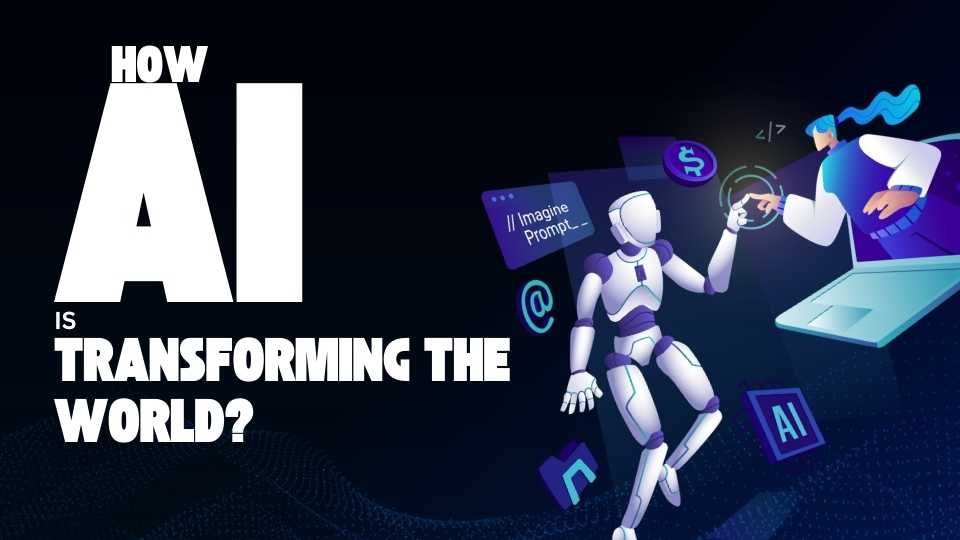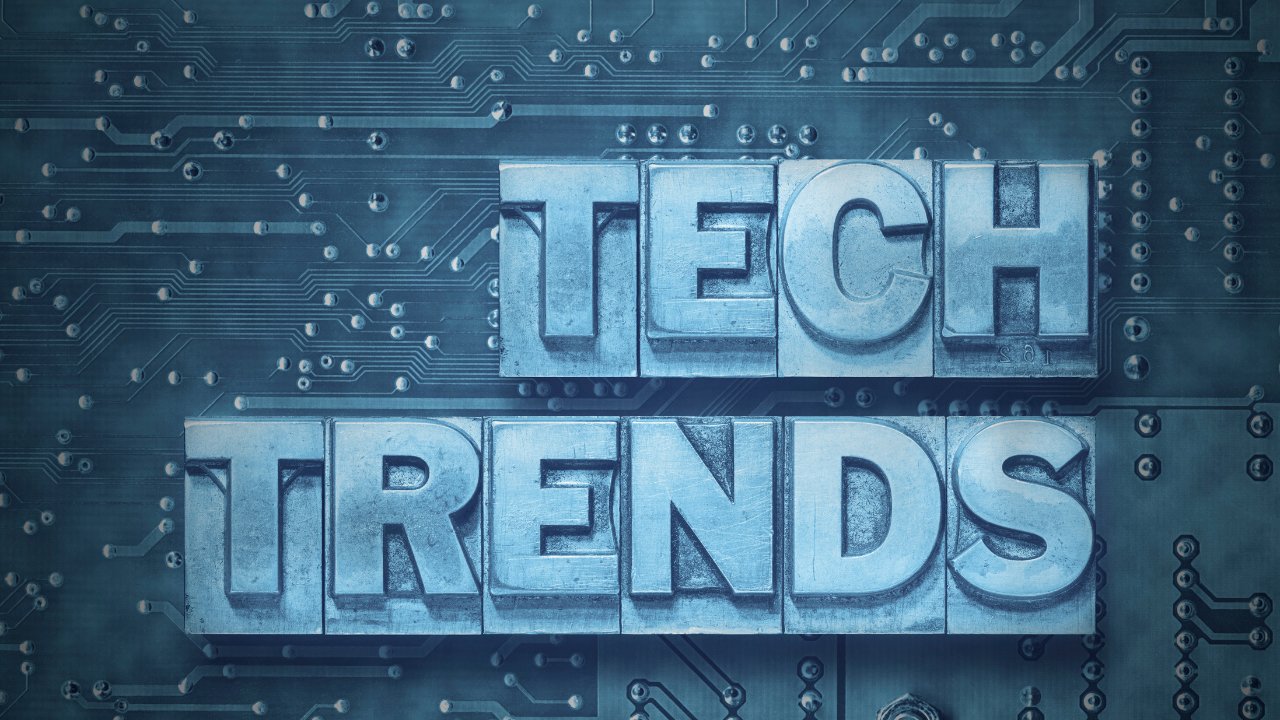One of the 21st century's most revolutionary technologies, artificial intelligence (AI) is transforming many facets of our daily lives and upending entire businesses. Artificial Intelligence (AI) propels innovation, increases productivity, and creates new opportunities across various industries by enabling computers to mimic human intellect and carry out complicated tasks.
An extensive examination of how AI is changing the world may be found below.
1. Healthcare:
a. Better Treatment and Diagnostics:
- Medical Imaging: AI algorithms analyze medical pictures (such as MRIs, CT scans, and X-rays) with amazing precision, helping physicians identify ailments like cancer, heart issues, and neurological disorders early on.
- Predictive analytics: By evaluating enormous volumes of medical data, AI models forecast patient outcomes and the course of diseases, enabling proactive care and individualized treatment regimens.
- Drug Discovery: AI shortens research durations and costs, finds promising drug candidates, and predicts their efficacy to speed up the drug discovery process.
b. Improved Medical Attention:
- Virtual Health Assistants: AI-driven chatbots and virtual assistants offer round-the-clock assistance, respond to questions about health, set up appointments, and keep an eye on patients' conditions from a distance.
- Robotic Surgeries: AI-guided surgical robots help execute accurate, minimally invasive surgeries, speeding up recovery and enhancing surgical results.
2. Transportation:
a. Autonomous Vehicles:
- Self-Driving Cars: Companies like Tesla, Waymo, and Uber are leveraging AI to develop autonomous vehicles that promise to reduce accidents, alleviate traffic congestion, and provide mobility solutions for those unable to drive.
- Smart Traffic Management: AI systems optimize traffic flow by analyzing real-time data, adjusting traffic signals, and providing route recommendations to reduce commute times and emissions.
b. Predictive Maintenance:
- Fleet Management: AI monitors vehicle performance and predicts maintenance needs, reducing downtime and operational costs for transportation companies.
- Public Transportation: AI enhances the efficiency and reliability of public transit systems by predicting passenger demand and optimizing routes and schedules.
3. Finance:
a. Fraud Detection and Security:
- Anomaly Detection: By examining patterns and spotting abnormalities, AI systems detect suspicious transactions and possible fraud in real time, improving security for both clients and financial institutions.
- Risk Management: AI evaluates market volatility and credit risk, facilitating more informed choices and investment plans.
b. Individualization and Customer Service:
- Chatbots: AI-driven chatbots lower operating costs and improve customer experience by offering immediate customer service, answering questions, and assisting with transactions.
- Personalized Financial Advice: AI provides individualized financial planning and investing advice by analyzing market trends and individual financial actions.
4. Education:
a. Tailored Education:
- Adaptive learning platforms: AI algorithms modify course material and pace according to each student's performance and preferred method of learning, improving retention and results.
- Intelligent Tutoring Systems: AI offers students individualized instruction and feedback to help them grasp difficult ideas and develop new abilities outside of the conventional classroom.
b. Effectiveness of Administration:
- Automated Grading: By evaluating assignments and tests automatically, AI simplifies the grading process and frees up teachers to concentrate more on instruction and student interaction.
- Enrollment and Resource Management: AI streamlines scheduling, resource distribution, and enrollment procedures, increasing the general effectiveness of educational establishments.
5. Manufacturing and Industry:
a. Automation and Efficiency:
- Robotics: AI-powered robots perform repetitive and hazardous tasks with high precision, increasing productivity and safety in manufacturing environments.
- Predictive Maintenance: AI predicts equipment failures before they occur, enabling timely maintenance and reducing downtime and costs.
b. Quality Control:
- Inspection Systems: AI analyzes products during and after production to detect defects and ensure quality standards are met consistently.
- Supply Chain Optimization: AI enhances supply chain management by forecasting demand, optimizing inventory levels, and improving logistics and delivery processes.
6. Agriculture:
a. Precision Farming:
- Crop Monitoring: AI analyzes data from drones and sensors to monitor crop health, soil conditions, and weather patterns, enabling farmers to make informed decisions and optimize yields.
- Automated Equipment: AI-driven machinery performs planting, harvesting, and irrigation tasks efficiently, reducing labor requirements and resource usage.
b. Livestock Management:
- Health Monitoring: AI tracks and analyzes livestock health and behavior, enabling early detection of diseases and improving animal welfare.
- Feed Optimization: AI determines optimal feeding schedules and compositions to enhance growth rates and reduce waste.
7. Retail and E-commerce:
a. Enhanced Customer Experience:
- Personalized Recommendations: AI analyzes customer preferences and behaviors to provide tailored product recommendations, increasing sales and customer satisfaction.
- Virtual Assistants and Chatbots: AI-driven chatbots assist customers with product inquiries, order placements, and support, offering seamless shopping experiences.
b. Inventory and Supply Chain Management:
- Demand Forecasting: AI predicts consumer demand trends, allowing retailers to manage inventory effectively and reduce overstock or stockouts.
- Automated Warehousing: AI controls automated storage and retrieval systems, optimizing warehouse operations and order fulfillment processes.
8. Entertainment and Media:
a. Content Creation and Curation:
- Recommendation Systems: AI suggests movies, music, and articles based on user preferences, enhancing content discovery on platforms like Netflix and Spotify.
- Automated Content Generation: AI creates music, art, and written content, pushing the boundaries of creativity and offering new forms of entertainment.
b. Enhanced User Engagement:
- Interactive Experiences: AI powers virtual and augmented reality applications, creating immersive and interactive entertainment experiences.
- Real-time Translation: AI provides instant translation services, making content accessible to a global audience and breaking language barriers.
9. Environment and Sustainability:
a. Climate Modeling and Prediction:
- Environmental Monitoring: AI analyzes vast datasets to monitor environmental changes, predict natural disasters, and inform climate action strategies.
- Resource Management: AI optimizes using natural resources like water and energy, promoting sustainable practices and reducing waste.
b. Conservation Efforts:
- Wildlife Protection: AI assists in tracking and protecting endangered species by analyzing data from cameras, sensors, and satellites.
- Pollution Control: AI monitors and predicts pollution levels, helping authorities implement effective measures to improve air and water quality.
10. Public Services and Governance:
a. Smart Cities:
- Infrastructure Management: AI manages and optimizes urban infrastructure, including energy grids, water supply, and waste management systems, enhancing efficiency and quality of life.
- Public Safety: Through surveillance systems, predictive policing, and coordinated catastrophe response, AI helps emergency services and law enforcement.
b. Formulating and Managing Policies:
- Data-Driven Decisions: AI examines economic and social data to better influence policy choices and enhance the provision of public services.
- Citizen Engagement: AI-powered platforms improve transparency and involvement by facilitating improved communication between citizens and governments.
Obstacles and Things to Think About:
Although artificial intelligence (AI) has many advantages, several issues must be resolved:
- Ethical Concerns: As AI systems make more judgments that affect people's lives, ethical concerns about privacy, bias, and accountability surface.
- Job Displacement: Automation may result in job losses in specific industries, calling for workforce adaptation plans and retraining.
- Security Risks: Regulations and strong security measures are necessary since AI systems are susceptible to cyberattacks and misuse.
- Regulation and Governance: To guarantee responsible AI development and application, it is crucial to establish suitable legal frameworks and standards.
In Summary:
Artificial intelligence is undoubtedly changing the world in several ways by boosting productivity, spurring creativity, and creating new opportunities. As AI develops, it can alleviate some of the world's most urgent problems and raise living standards for people everywhere. To maximize AI's benefits for everybody, it is imperative to carefully negotiate the related issues and make sure that inclusivity, sustainability, and ethical standards are the driving forces behind both research and application.








